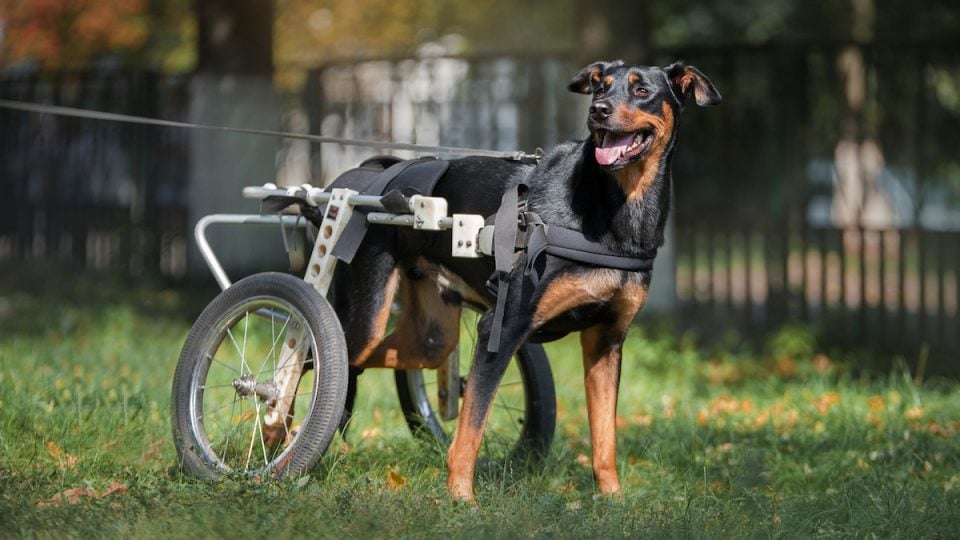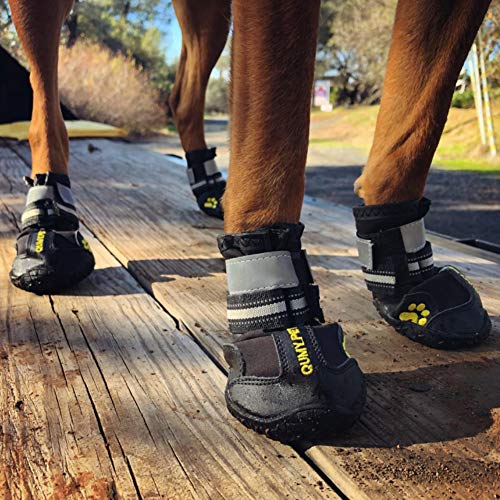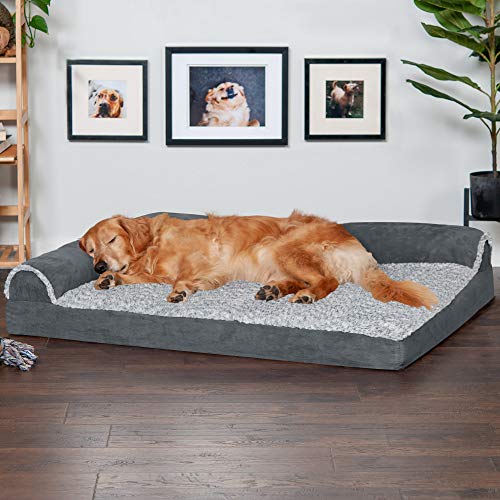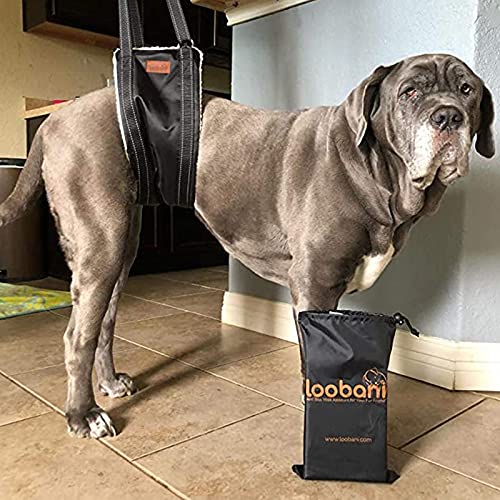- This post contains affiliate links. Read more here.
- Not a substitute for professional veterinary help.
A diagnosis of degenerative myelopathy, a spinal cord disease, in a dog can be heartbreaking. Though the prognosis generally is not good, there is a lot you can do to keep your dog comfortable and healthy for as long as possible. As we all know, it’s all about quality time and quality of life when it comes to our furry loved ones. Here is an overview of degenerative myelopathy as well as some suggestions for ways you can make things a bit easier on your pup, and you.
What is degenerative myelopathy in dogs?
Degenerative myelopathy, also known as chronic degenerative radiculomyelopathy (CDRM), is a disease affecting the spinal cord—specifically the degeneration of the white matter of the spinal cord. It presents initially as hind limb weakness and slowly progresses to paralysis. It’s similar to ALS, or Lou Gehrig’s Disease, in humans, and the cause is unknown.
Because many of its early-stage symptoms resemble arthritis, which often occurs as a result of hip dysplasia in many large breeds, it’s hard to diagnose degenerative myelopathy in dogs. Getting to a diagnosis of degenerative myelopathy can be time-consuming, expensive, and frustrating.
Are certain breeds of dog more prone to degenerative myelopathy?
Though it’s generally considered a disease occurring in middle-aged and older dogs (usually between ages 4–14), degenerative myelopathy can also affect younger dogs. It is most common in German Shepherds and German Shepherd mixes, Siberian Huskies, and Collies. Many other breeds have been identified as at risk for developing DM, including Bernese Mountain Dogs, Boxers, Chesapeake Bay Retrievers, Golden Retrievers, Kerry Blue Terriers, Miniature Poodles, Nova Scotia Duck Tolling Retrievers, Pembroke Welsh Corgis, Pugs, Rhodesian Ridgebacks, Standard Poodles, Welsh Corgis, Welsh Corgi Cardigans, Welsh Corgi Pembrokes, and Wirehaired Fox Terriers.
What are the signs of degenerative myelopathy in dogs?
Early signs of degenerative myelopathy are obvious, though the cause often isn’t—the trouble being that the signs resemble those of other more common diseases.
- Knuckling: The hind paws turn under so that a dog walks on their knuckles, particularly when making turns.
- Scraping: Similar to knuckling, scraping occurs when the tops of the hind feet scrape the ground when walking. This can result in the tops of the feet losing their hair or becoming irritated.
- Swaying: When a dog’s hindquarters appear to sway from side to side when they are standing still.
- Falling: When pushed gently from the side, a dog will lose their balance and fall over.
- Difficulty rising: A dog has trouble getting up from a supine position.
As degenerative myelopathy worsens, so do these symptoms, eventually leading to hind end paralysis.
The good news is that there are some things you can do to make things easier on your dog, and you. Below are some products that can help with both comfort and mobility for dogs with degenerative myelopathy.
Qumy Waterproof Dog Boots
These waterproof boots are non-slip and can provide extra traction for dogs having trouble with their hind quarters. For dogs who are scraping or knuckling their back feet, they can also provide protection from injury and infection. These boots come in eight sizes to fit pooches of all shapes.
Shop on AmazonFurhaven Orthopedic Dog Bed
These orthopedic pet beds provide good overall support, reducing stress on sensitive pressure points. The covers are washable, and they come in many shapes, sizes, and designs.
Shop on AmazonCoodeo Dog Lift Harness, Support, and Recovery Sling
This combo harness and support sling can be a great assist for dogs with degenerative myelopathy. Because the disease affects the hindquarters, it can be difficult for some dogs to get up (though they can still walk). You can use the sling handle to help your dog stand and move along, while the harness provides safety and comfort for short walks and visits with friends.
Loobani Portable Dog Sling
A sling can be an amazing aid for a dog with progressive degenerative myelopathy. With a sling you can quickly help your pup get up and around the house or into the yard without having to fuss with any buckles or clasps. This sling is easy to use and has a soft padded inside so it won’t chafe your pup’s delicate belly.
Shop on AmazonBest Friend Mobility Dog Wheelchair
Just because your buddy’s back end isn’t working so well doesn’t mean their front end isn’t! A dog wheelchair can be a great option for pups who have plenty of energy and are eager to get out into the world despite having some physical trouble navigating it. These wheelchairs come in many different sizes and are adjustable so you can find the perfect fit for your dog with degenerative myelopathy.
Shop on Amazon







